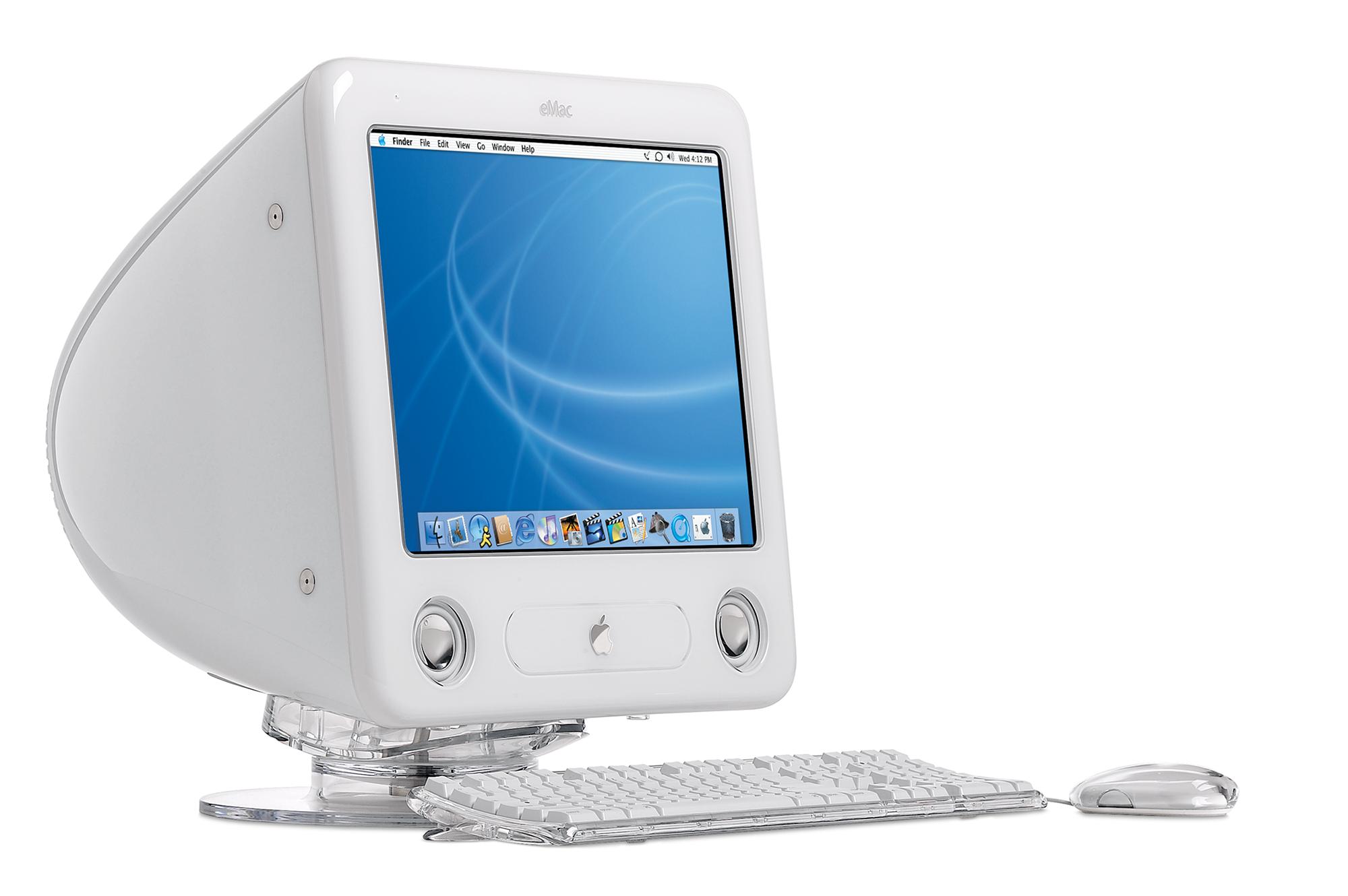The e is for Education

This month's old Mac is the weird cousin of the iMac G4 we looked at in February. Introduced only months after the iMac G4, the eMac mashed up old ideas with new tech: It retained the all-in-one design defined by the iMac G3, but it shipped with a larger 17-inch CRT display and used the same G4 chipset found in the LCD-equipped iMacs.
Here we see the eMac, complete with keyboard, mouse and optional stand.
Priced at $999, it looked like a great deal — but you couldn't just walk into a store and pick one up when it launched in April 2002. You see, the eMac wasn't for the average user: It was for the education market.
E is for education
The "i" in iMac may have stood for "internet," but don't go assuming the "e" in eMac stood for "ethernet" — the computer took its first-initial moniker from a very different avenue: education. Here's how Steve Jobs introduced it to the press in April 2002:
Our education customers asked us to design a desktop computer specifically for them. The new eMac features a 17-inch flat CRT and a powerful G4 processor, while preserving the all-in-one compact enclosure that educators love.
The eMac was a tangible expression of how much Apple cared about the education market; it had been a stronghold for the company dating back to the Apple II days.
But a few months after the computer's release, Apple put the eMac for sale in its retail stores; this led to conjecture that Apple wasn't selling the eMac to schools in the volumes it had hoped. The company's press release read differently, however:
"Consumers have pounded on the table demanding to buy the eMac, and we agree," said Apple CEO Steve Jobs. "The eMac's production ramp is ahead of schedule, so we'll have enough eMacs this quarter to satisfy both our education and non-education customers."
Whatever the real reason, the eMac was out in the world, available alongside the iMac in retail stores and on the Internet.
Master your iPhone in minutes
iMore offers spot-on advice and guidance from our team of experts, with decades of Apple device experience to lean on. Learn more with iMore!
Problematic problems
While the design of the eMac may have been based on the iMac before it, the increased heat generated by the G4 processor forced Apple to add a fan to the back of the case, hidden behind a plastic cap ringed in translucent plastic.
The fan kept the processor's heat under control, but the eMac still played host to several hardware issues over its short lifespan.
Many early units were plagued by myriad video-related failures, including discoloration, jittery video and what got dubbed as "raster shift", fixable only with the replacement of an internal video cable:
In most cases, the problem causes the bottom third or half of the screen to go black, with the rest of image shifting upward and out is de the top boundary of the display. Serious static also accompanies the problem, rendering the viewable part of the screen virtually useless.
In fact, units built between April 2004 and June 2005 had such widespread video and power issues that Apple opened a Repair Extension Program to address the problem. The REP covered problems due to swollen or burst capacitors, an issue that also plagued the company's iMac G5, as well as products from many other manufacturers.
I was working as a Mac Genius while this REP was open, and had a local school come in with over two dozen machines covered by the program. While the school may have been happy to get their machines repaired free of charge, storing that many eMacs while waiting for parts to come in was a challenge that my store manager was less than thrilled about helping me solve.
A slow march to nowhere
But as poor as the eMac's hardware reputation was, the machine's woes were far more philosophical than that. Designing a machine to be a low-cost, simple solution for the classroom led to what was always going to be a compromised mainstream product: While the G4 was a welcome addition for education customers, the CRT design made the eMac look old and bloated in comparison to the sleek, LCD-topped iMac G4 when the machine went on sale to the public. The 50-pound machine just didn't make a big name for itself.
That's not to say Apple didn't try: From April 2002 to October 2005, the company revved the machine three times, adding better graphics, USB 2.0 and faster CPUs. But ultimately, Apple replaced the eMac with a low-cost, education-only Intel iMac. The last CRT-based Mac slipped quietly away, forgotten by almost everyone who didn't see one in their school or office.
Stephen Hackett is the co-founder of the Relay FM podcast network. He's written about Apple for seven years at 512 Pixels, and has more vintage Macs than family members living in his Memphis, TN home.

